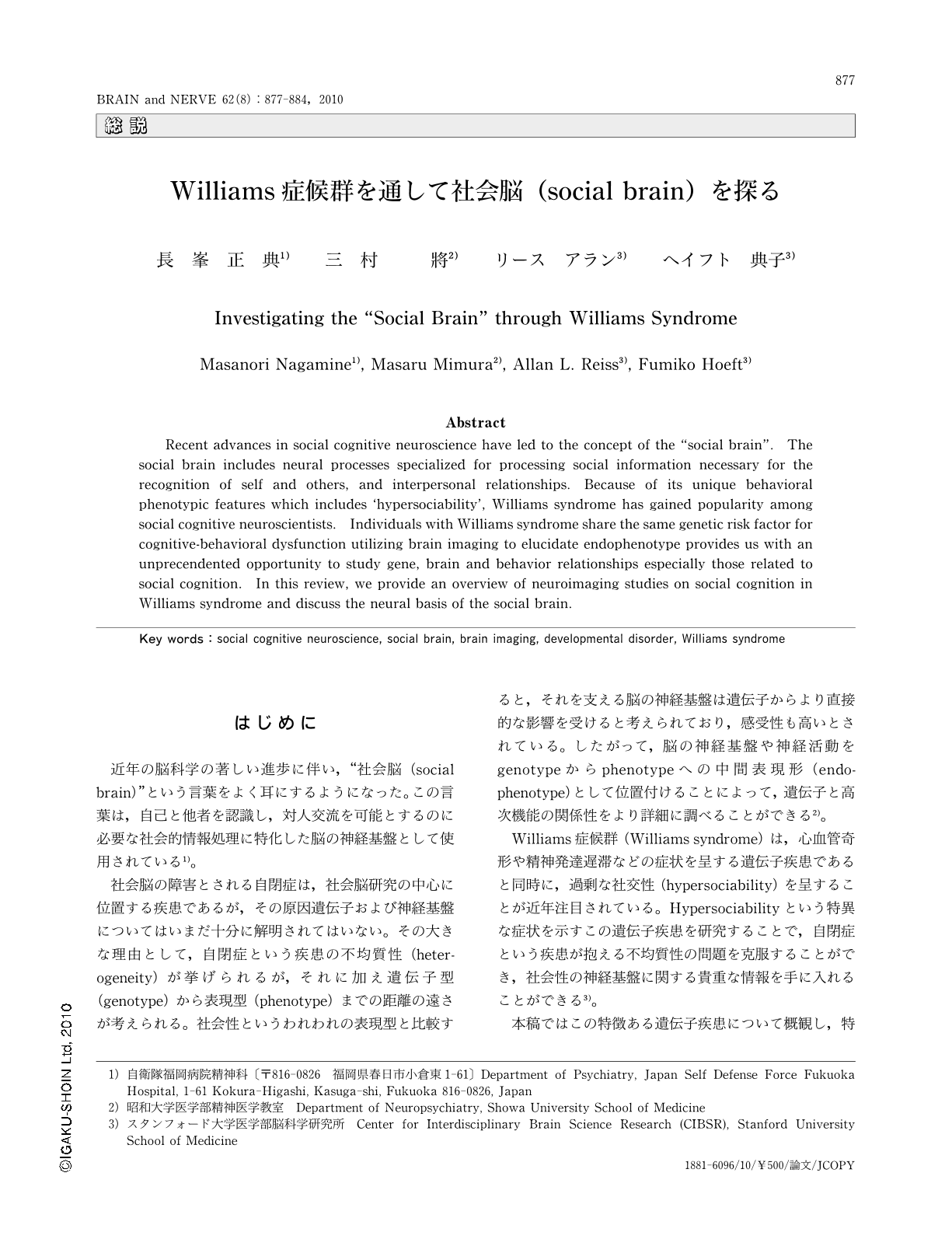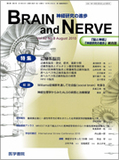Japanese
English
- 有料閲覧
- Abstract 文献概要
- 1ページ目 Look Inside
- 参考文献 Reference
はじめに
近年の脳科学の著しい進歩に伴い,“社会脳(social brain)”という言葉をよく耳にするようになった。この言葉は,自己と他者を認識し,対人交流を可能とするのに必要な社会的情報処理に特化した脳の神経基盤として使用されている1)。
社会脳の障害とされる自閉症は,社会脳研究の中心に位置する疾患であるが,その原因遺伝子および神経基盤についてはいまだ十分に解明されてはいない。その大きな理由として,自閉症という疾患の不均質性(heterogeneity)が挙げられるが,それに加え遺伝子型(genotype)から表現型(phenotype)までの距離の遠さが考えられる。社会性というわれわれの表現型と比較すると,それを支える脳の神経基盤は遺伝子からより直接的な影響を受けると考えられており,感受性も高いとされている。したがって,脳の神経基盤や神経活動をgenotypeからphenotypeへの中間表現形(endophenotype)として位置付けることによって,遺伝子と高次機能の関係性をより詳細に調べることができる2)。
Williams症候群(Williams syndrome)は,心血管奇形や精神発達遅滞などの症状を呈する遺伝子疾患であると同時に,過剰な社交性(hypersociability)を呈することが近年注目されている。Hypersociabilityという特異な症状を示すこの遺伝子疾患を研究することで,自閉症という疾患が抱える不均質性の問題を克服することができ,社会性の神経基盤に関する貴重な情報を手に入れることができる3)。
本稿ではこの特徴ある遺伝子疾患について概観し,特にhyper sociabilityに注目することによって,社会脳の神経基盤について考えてみたいと思う。
Abstract
Recent advances in social cognitive neuroscience have led to the concept of the "social brain". The social brain includes neural processes specialized for processing social information necessary for the recognition of self and others,and interpersonal relationships. Because of its unique behavioral phenotypic features which includes ‘hypersociability',Williams syndrome has gained popularity among social cognitive neuroscientists. Individuals with Williams syndrome share the same genetic risk factor for cognitive-behavioral dysfunction utilizing brain imaging to elucidate endophenotype provides us with an unprecendented opportunity to study gene,brain and behavior relationships especially those related to social cognition. In this review,we provide an overview of neuroimaging studies on social cognition in Williams syndrome and discuss the neural basis of the social brain.

Copyright © 2010, Igaku-Shoin Ltd. All rights reserved.


